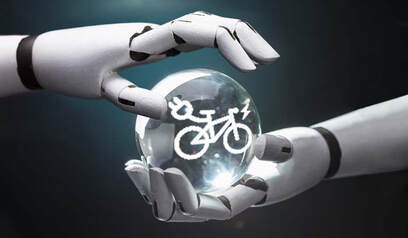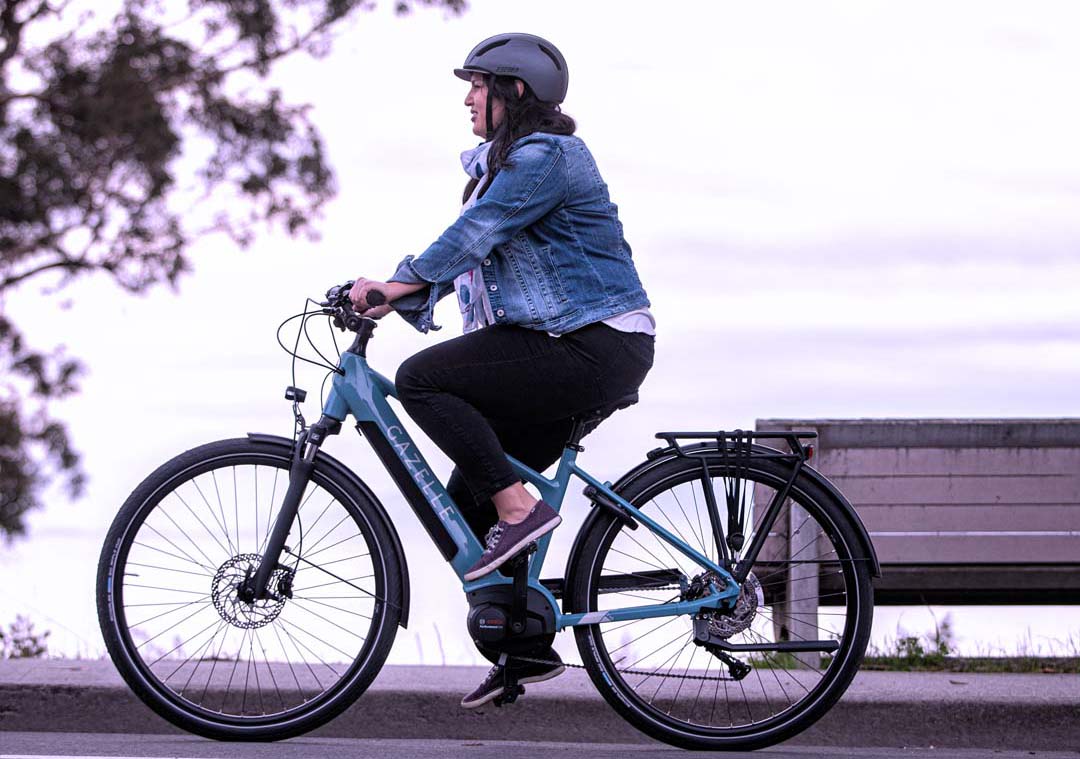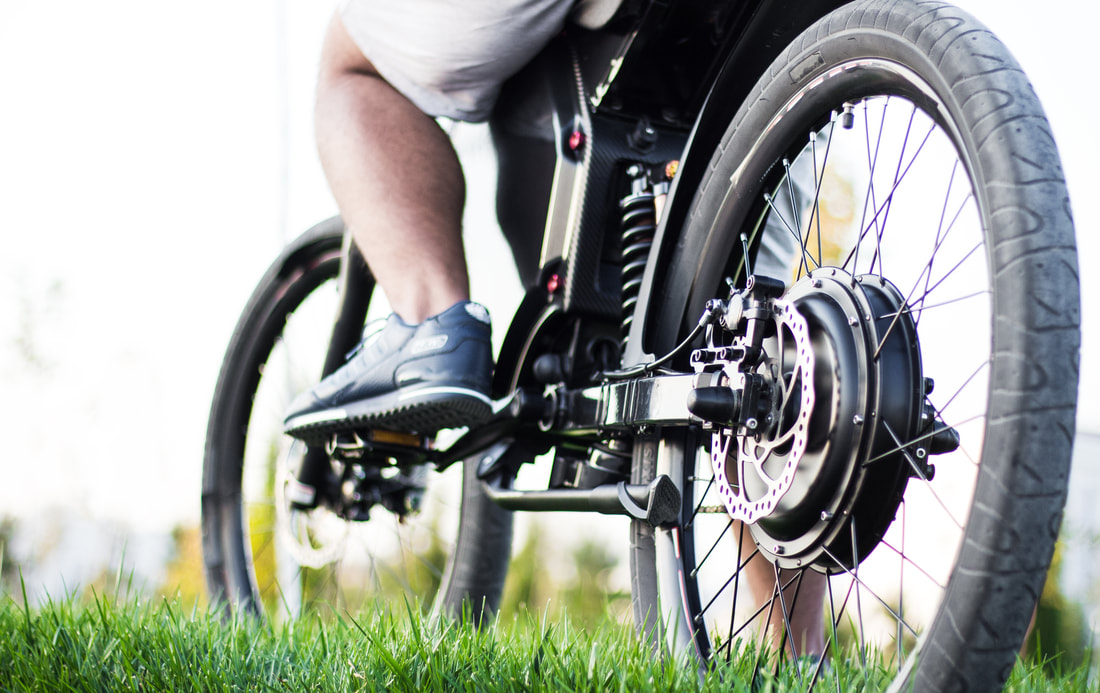 There is a lot of innovation in the electric bike (ebike) space right now. Significant investments are being made by companies in diverse industries as well as individual inventors around the world to improve ebike designs. While two-wheel transportation has evolved steadily over the past 120 years, the pace of innovation has sped up exponentially as a result of the addition of a motor and battery to a bike. The electrical components on an ebike and the refinement of these creates new opportunities for features not possible before. Following is some of the technology we’ve noticed available in leading edge ebikes today and might be common in the future plus social trends indicating acceptance of ebikes. Technology Trends 1. Automatic shifting – No more shift levers on the handlebars or needing to manually select the best gear for your route. Just like the automatic transmission on a car and some bikes and ebikes today, the ebikes of the future will likely have a motor that automatically adapts to your cadence and the terrain. 2. Braking with a single lever – If you’ve ever tried to explain to a new rider the mechanics of braking with a right and left lever, you know how simple it would be to have brakes operated by a single lever on the right side of the handlebar. This lever would apply 60% of the braking force at the front wheel and 40% at the rear wheel applying the appropriate braking force with the rider having to do less analysis and result is a safe stop. With the appropriate sensors and electronics on an ebike this feature would be a possibility. 3. Faster speeds – Motor technology actually exists today for ebikes to go faster than the maximum legally allowable speed of 28mph in the US but the excess speed is being limited by the manufacturer. Although the motor may have the capability for higher speeds, an ebike should be considered a system and today’s ebikes have not been designed for that extra speed. But there are ebikes being designed today to keep up with auto traffic so it just a matter of time before these become options for the city and beyond. One example is the Dutch brand Van Moof, with the announcement of its hyper bike, the Van Moof V being designed for higher speeds and longer distances as a replacement for scooters and cars, reversing the car-first mentality in cities. To safely support these higher speeds we also will need components made from materials that are light but durable. 4. New batteries – Battery technology will continue to evolve with smaller sized batteries providing a greater range of travel. It has been announced by Samsung SDI that the first solid state batteries will be available early in 2023. While they will initially go to high margin applications such as aerospace they will eventually be available for Electric Vehicles (EV) such as cars, motorcycles, scooters, and ebikes. In the future there might also be modular battery packs so that you can choose the range you need on a particular ride. Also we would love it if the charger could be stored somewhere on the ebike such as the downtube instead of having to it carry it in a bag. 5. New players – There will continue to be an increase in the variety of models available for different uses, i.e. road, hybrid, mountain, tricycle, recumbent, cargo, gravel. As you would expect, all major bike brands offer ebike models and there are also many ebike-only startups that are designing and manufacturing ebikes at a certain price point and style. But there are some non-traditional players in the ebike field also. In the oil industry Shell is into ebikes as a way for them to invest in lower carbon technology. They call their bike Shell RIDE SR-3B Several automobile manufacturers are developing ebikes:
Motocycle companies are also getting on board. Harley Davidson and their Serial 1 brand have the Switch, Bash, Rush, and Mosh models. They even make an electric balance bike for children 3-7 years old. Other motorcycle companies rebranding themselves as a mobility company include Ducati, with their MIS-S, TK-01RR, and Futa models, and Yamaha with their YDX-MORO 07, Cross Code and Wabash RT models. German car multimedia manufacturer Blaupunkt, in business since 1932, is branching out into folding ebikes with models they call the Henri, Fiene, Fiete, and Enno. 6. Security – Security measures that might be widely available on ebikes in the future include being locked or unlocked with a passcode, automatically unlocking as the rider approaches, and built in GPS tracking to be able to locate an ebike in the event of a theft. When you reach your destination, the bike goes up on its kickstand which locks the bike in place. 7. Monitor health – Heart rate monitors are widely available today but in the future these will be integrated into the ebike and the data available on the display. Onboard sensors might capture hill gradients, RPM cadence, a rider’s physical power output and heart rate. With this data the heart rate monitor would be able to automatically adjust the bike’s assist level. The ebike of the future may also be able to monitor its own health. Tires would have sensors that check for the correct air pressure, sensors on the frame would monitor when the disc brakes needs servicing and if any other parts are damaged and need replacement, and what the is the current battery range. 8. Create content – Integrated video cameras on both the front and rear of the ebike will be able to capture action at all times, never missing a shot you wish you had taken. With an eSIM card embedded in the ebike frame there is connection to the internet at all times so that video clips can be automatically loaded onto the rider’s phone and shared with others. 9. Communicate with other bikes and infrastructure – Riding an ebike allows new possibilities for collecting and sharing information:
Social Trends
Besides the technology trends mentioned above, we can also predict, or hope, that the wide-spread use of ebikes will have a positive impact on individuals and communities. Predictions for the position of ebikes in society includes:
Based on current trends, we are predicting that ebikes will play a larger role in mobility resulting in greater health, an improved climate, and more human centric cities. Comments are closed.
|
Earth Rider Blog about CycingAuthorSharon Kaminecki and others comment on adventures in bicycling and other stories Categories
All
Archives
August 2023
|





